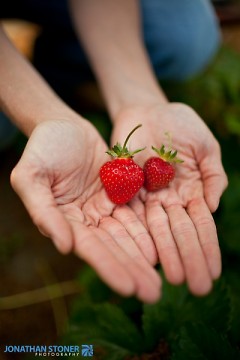Timing is everything. It matters for growing and harvesting plants and for Lisa Rose Starner, it matters for writing her new book, "Grand Rapids Food: A Culinary Revolution."
Laid up by knee surgery in April of last year after tearing her ACL, she was told by her surgeon to stay off her knees. Working in her garden or gathering plants on the side of the road wasn’t something she could do until she healed.
“I was quite befuddled, disappointed and depressed. I couldn’t do the things I love. It was morel season and I couldn’t do any foraging,” she says.
Starner, well regarded in Grand Rapids for her herbal CSA and medicinal plant classes, received an email that turned things around. The History Press, which focuses on regional topics and has a number of books from Michigan writers, asked Starner if she was interested in writing a local food documentary for its new "American Palate" series about food in Grand Rapids.
“I’ve always loved writing, it comes naturally to me. I took on writing the book as a challenge and used it to build a new professional skill,” she says.
“The timing was exceptional for the book,” Starner says. “I’d been a participant observer in the local food movement and had written a few stories about food, food systems, community wellness and social change for The Rapidian as a citizen reporter,” she says. “The book is an extension of that work."
Starner admits that at 120 pages the book isn’t comprehensive.
"But it gives an overview of food here and where we can go,” she says. Starner already knew many of the players and events in the local food movement.
“It is an opportunity for me to give voice to the Grand Rapids food movement and to help raise the quality of conversation around where our community is headed and how food plays a role in that,” she says. The book covers about 12 years of activity.
“It [food] isn’t just the farm to table artisan feel good story, there’s more to it," she says. "Don’t get me wrong, that’s important, but there are bigger issues we need to talk about.” Those bigger issues include community development, city leadership, chickens, food affordability, sustainability, hunger and access issues and food as a quality of life issue, says Starner. Food policy, the farm bill, environmental policies were some of the issues she wasn’t able to address in the book, but concern her still.
In all, she interviewed 35 people: business owners, farmers, gardeners, people in healthcare and others to create the book.
“Many of these people are picking up shovels and getting the work done, they’re not waiting for meetings,” she says. She cites neighborhood gardens as places for growing food and community and the book opens with a story of garden success in the Baxter neighborhood. Neighbors there have built a community garden called the Treehouse Garden, a haven in an area that has gangs and is known for violence.
She also addresses the role of food, children and programs that are created to teach them about food.
“People think it is a nice thing to do, but it is much more. Kids learning to work in gardens and grow their own food can foundationally change how children will live. It is a basic human skill to be able to feed yourself,” she says.
Starner’s expertise with children and gardens comes from her work creating the Mixed Greens program and leading programming at Blandford Nature Center, as well as working in San Francisco Bay area with a school program.
“Food,” she says, “is about taking time and having a meaningful conversation. The food is secondary to connecting to place and to one another.”
The Rapidian, a program of the 501(c)3 nonprofit Community Media Center, relies on the community’s support to help cover the cost of training reporters and publishing content.
We need your help.
If each of our readers and content creators who values this community platform help support its creation and maintenance, The Rapidian can continue to educate and facilitate a conversation around issues for years to come.
Please support The Rapidian and make a contribution today.


